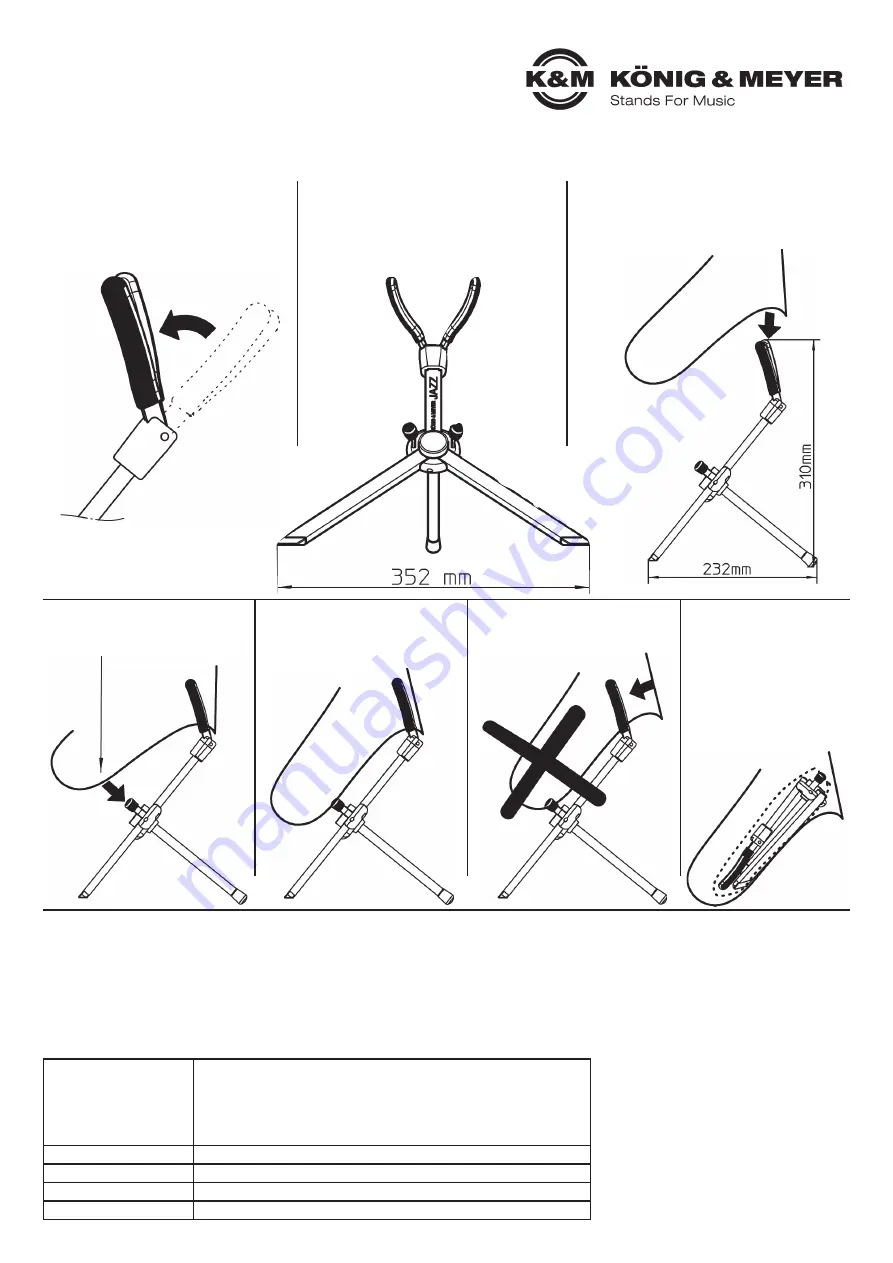
TECHNICAL DATA / SPECIFICATIONS
CHECK, MAINTENANCE, CLEANING
- If maintenance is needed, pay attention to possible risks (wedging or pinching of hands/fingers, knocking the stand over).
- To care for the product use a damp cloth and a non-abrasive cleaning agent.
FAULT-FINDING (F) and REPAIR (R)
F: Stand is not stable - R: Check the surface i.e. the end caps. If needed, replace the end caps. - B: Tighten the knurled screw.
F: Saxophone slips - B: Ensure that the saxophone is properly placed on the stand - refer to steps E-J.
SETUP INSTRUCTIONS
Material
Tube profile: Aluminum, black anodized
Support arm, supports: Steel, black powder coating
Knurled screw: Aluminum, nature
Rubberized coating: Thermoplastic elastomer (TPE), black
Form parts: Plastic (PA) black
max. load
Es-Alt Saxophone
Dimensions
W x D x H: 352 x 232 x 310 mm
Pack size, weight
W x D x H: 70 x 60 x 260 mm, 0.3 kg
Box, weight
W x D x H: 70 x 70 x 265 mm, 0.4 kg
KÖNIG & MEYER
GmbH & Co. KG
Kiesweg 2, 97877 Wertheim, www.k-m.de
14330-000-55 Rev.05 03-80-232-00 1/16
E
Extend the support arms
out as far as they will go.
H
Place the Saxophone on
the small supports on the
lower part of the stand.
J
The instrument
now rests on the
support arms.
Incorrect!
If the bell is too far away from
the support arms the
saxophone can slip.
K
Disassembly is
performed in the
reverse order.
L
Place the stand in the
velour bag and carefully
place it into the bell of
the instrument.
F
Place the Jazz stand
on a stable surface.
G
Place the bell of the instrument as close
to the edge as possible onto the large
support arm, so that the instrument does
not slip off of the support arm/stand.






















